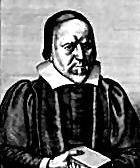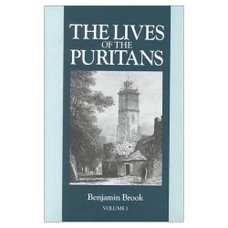Contemporaries 3
Isabel Wray, Lady Darcy (d 1622)
 SABEL Wray (d 1622), a patron of clergymen, was, along with her sister Frances Wray (d August 1634), a great help to Bernard in his early days, providing him with the finance he needed to proceed to Christ's College, Cambridge. Isabel was the daughter of Sir Christopher Wray of Glentworth (c1522-1592), the lord chief justice and his wife Ann Brocklesby [nee Girlington] (d 1593). Unlike their anti-puritan father the daughters and their brother Sir William, were sympathetic to radical Protestants like the Se-Baptist John Smyth (d 1612).
SABEL Wray (d 1622), a patron of clergymen, was, along with her sister Frances Wray (d August 1634), a great help to Bernard in his early days, providing him with the finance he needed to proceed to Christ's College, Cambridge. Isabel was the daughter of Sir Christopher Wray of Glentworth (c1522-1592), the lord chief justice and his wife Ann Brocklesby [nee Girlington] (d 1593). Unlike their anti-puritan father the daughters and their brother Sir William, were sympathetic to radical Protestants like the Se-Baptist John Smyth (d 1612).
In 1586 Isabel had a Katherine Wright, who was believed to be possessed by a demon, taken to her house at Walton, near Chesterfield, for godly ministers to treat her. Eventually John Darrell (c1562-c1607), who later enjoyed a spectacular, if short-lived, career as an exorcist, was credited with curing Wright. He later sent Isabel his own account of his successful exorcisms and she no doubt introduced him to the circle of Puritans led by Arthur Hildersham, centring on Ashby-de-la-Zouch. Darrell moved to Ashby and these Puritans became his staunch supporters.
According to the ODNB Isabel and her second husband Sir William Bowes were angered by opposition to the millenary petition for church reform made when James I came to power. They expressed their views in a letter to the Earl of Shrewsbury of 17 December, 1603. Paying what was then an unusual tribute to female skills in matters theological, Sir William wrote that he had consulted with his wife before writing as ‘she is verie wise, especiallie in thinges of this kind’. He passed on his wife's detailed criticisms of the University of Oxford's disparaging answer to the millenary petition and Isabel added her own postscript, comparing the Answer to Rabshakeh's ultimatum to Hezekiah (2 Kings 18) - 'railing Rabshakeh’ was a stock figure for a blasphemer in literature of the time. She also prayed that God would turn the king's heart and lead him to favour the petition. Shrewsbury replied to Lady Bowes that ‘your indiscrete comparison bewrayes the weaknes of your womanhode, thoughe much disagreeing from the modestie of your sex’. He went on, invoking the example of Eve, to warn Sir William against following his wife's counsel and bewailed the influence Puritan ministers had on ‘simple women’.
It was at Isabel's Coventry home that Bernard later met in conference with Hildersham, Smyth, William Brewster, John Dod, Thomas Helwys, John Robinson and others in 1606 to discuss conditions in the Church of England. At this conference Smyth and Helwys argued against the Church of England and in favour of separation from it. Their position was rejected by the majority but at this point Bernard seems still to have been favourable. Eventually he decisively rejected separatism and vehemently attacked separatists. Perhaps Isabel was still sympathetic at this point too. In 1611 Helwys dedicated an anti-predestinarian work, A Short and Plaine Proofe, to her, voicing his gratitude for past support and hoping God would reveal to her the truth of his arguments.
There is no evidence that Isabel gave Helwys any further support but she continued to be generous to Puritan ministers, particularly where they had lost their livings for nonconformity. Among those who benefited from her patronage were Paul Baynes (1560-1617) and Richard Rothwell (b 1563). She was the sponsor of Rothwell's successful ministry in Durham and paid his salary of £40 a year.
Isabel was first married to Godfrey Foljambe (1558–1595), a Derbyshire JP and MP. Four years after his death, she became, in 1599, the second wife of Sir William Bowes of Bradley Hall (c 1575-1611), a Durham gentleman who, during Elizabeth's reign, held several important offices in the north of England and served on embassies to Scotland. Sir William died in 1611 and on 7 May 1617, Isabel married her third husband, John Darcy, third Lord of Aston (1579-1635). She was his second wife. She herself died on 12 February, 1622, at her house in Aldwark, near Rotherham, Yorkshire and was buried in nearby Rawmarsh.
 SABEL Wray (d 1622), a patron of clergymen, was, along with her sister Frances Wray (d August 1634), a great help to Bernard in his early days, providing him with the finance he needed to proceed to Christ's College, Cambridge. Isabel was the daughter of Sir Christopher Wray of Glentworth (c1522-1592), the lord chief justice and his wife Ann Brocklesby [nee Girlington] (d 1593). Unlike their anti-puritan father the daughters and their brother Sir William, were sympathetic to radical Protestants like the Se-Baptist John Smyth (d 1612).
SABEL Wray (d 1622), a patron of clergymen, was, along with her sister Frances Wray (d August 1634), a great help to Bernard in his early days, providing him with the finance he needed to proceed to Christ's College, Cambridge. Isabel was the daughter of Sir Christopher Wray of Glentworth (c1522-1592), the lord chief justice and his wife Ann Brocklesby [nee Girlington] (d 1593). Unlike their anti-puritan father the daughters and their brother Sir William, were sympathetic to radical Protestants like the Se-Baptist John Smyth (d 1612).In 1586 Isabel had a Katherine Wright, who was believed to be possessed by a demon, taken to her house at Walton, near Chesterfield, for godly ministers to treat her. Eventually John Darrell (c1562-c1607), who later enjoyed a spectacular, if short-lived, career as an exorcist, was credited with curing Wright. He later sent Isabel his own account of his successful exorcisms and she no doubt introduced him to the circle of Puritans led by Arthur Hildersham, centring on Ashby-de-la-Zouch. Darrell moved to Ashby and these Puritans became his staunch supporters.
According to the ODNB Isabel and her second husband Sir William Bowes were angered by opposition to the millenary petition for church reform made when James I came to power. They expressed their views in a letter to the Earl of Shrewsbury of 17 December, 1603. Paying what was then an unusual tribute to female skills in matters theological, Sir William wrote that he had consulted with his wife before writing as ‘she is verie wise, especiallie in thinges of this kind’. He passed on his wife's detailed criticisms of the University of Oxford's disparaging answer to the millenary petition and Isabel added her own postscript, comparing the Answer to Rabshakeh's ultimatum to Hezekiah (2 Kings 18) - 'railing Rabshakeh’ was a stock figure for a blasphemer in literature of the time. She also prayed that God would turn the king's heart and lead him to favour the petition. Shrewsbury replied to Lady Bowes that ‘your indiscrete comparison bewrayes the weaknes of your womanhode, thoughe much disagreeing from the modestie of your sex’. He went on, invoking the example of Eve, to warn Sir William against following his wife's counsel and bewailed the influence Puritan ministers had on ‘simple women’.
It was at Isabel's Coventry home that Bernard later met in conference with Hildersham, Smyth, William Brewster, John Dod, Thomas Helwys, John Robinson and others in 1606 to discuss conditions in the Church of England. At this conference Smyth and Helwys argued against the Church of England and in favour of separation from it. Their position was rejected by the majority but at this point Bernard seems still to have been favourable. Eventually he decisively rejected separatism and vehemently attacked separatists. Perhaps Isabel was still sympathetic at this point too. In 1611 Helwys dedicated an anti-predestinarian work, A Short and Plaine Proofe, to her, voicing his gratitude for past support and hoping God would reveal to her the truth of his arguments.
There is no evidence that Isabel gave Helwys any further support but she continued to be generous to Puritan ministers, particularly where they had lost their livings for nonconformity. Among those who benefited from her patronage were Paul Baynes (1560-1617) and Richard Rothwell (b 1563). She was the sponsor of Rothwell's successful ministry in Durham and paid his salary of £40 a year.
Isabel was first married to Godfrey Foljambe (1558–1595), a Derbyshire JP and MP. Four years after his death, she became, in 1599, the second wife of Sir William Bowes of Bradley Hall (c 1575-1611), a Durham gentleman who, during Elizabeth's reign, held several important offices in the north of England and served on embassies to Scotland. Sir William died in 1611 and on 7 May 1617, Isabel married her third husband, John Darcy, third Lord of Aston (1579-1635). She was his second wife. She herself died on 12 February, 1622, at her house in Aldwark, near Rotherham, Yorkshire and was buried in nearby Rawmarsh.
Frances first married Sir George St Paul (c 1562-1613), Baronet of Snarford, then Robert Rich (1559-1619), first Earl of Warwick, on 14 December, 1616. He had been married to Penelope Devereux with whom he had seven children but they divorced in 1605. She lived until August, 1634.












No comments:
Post a Comment